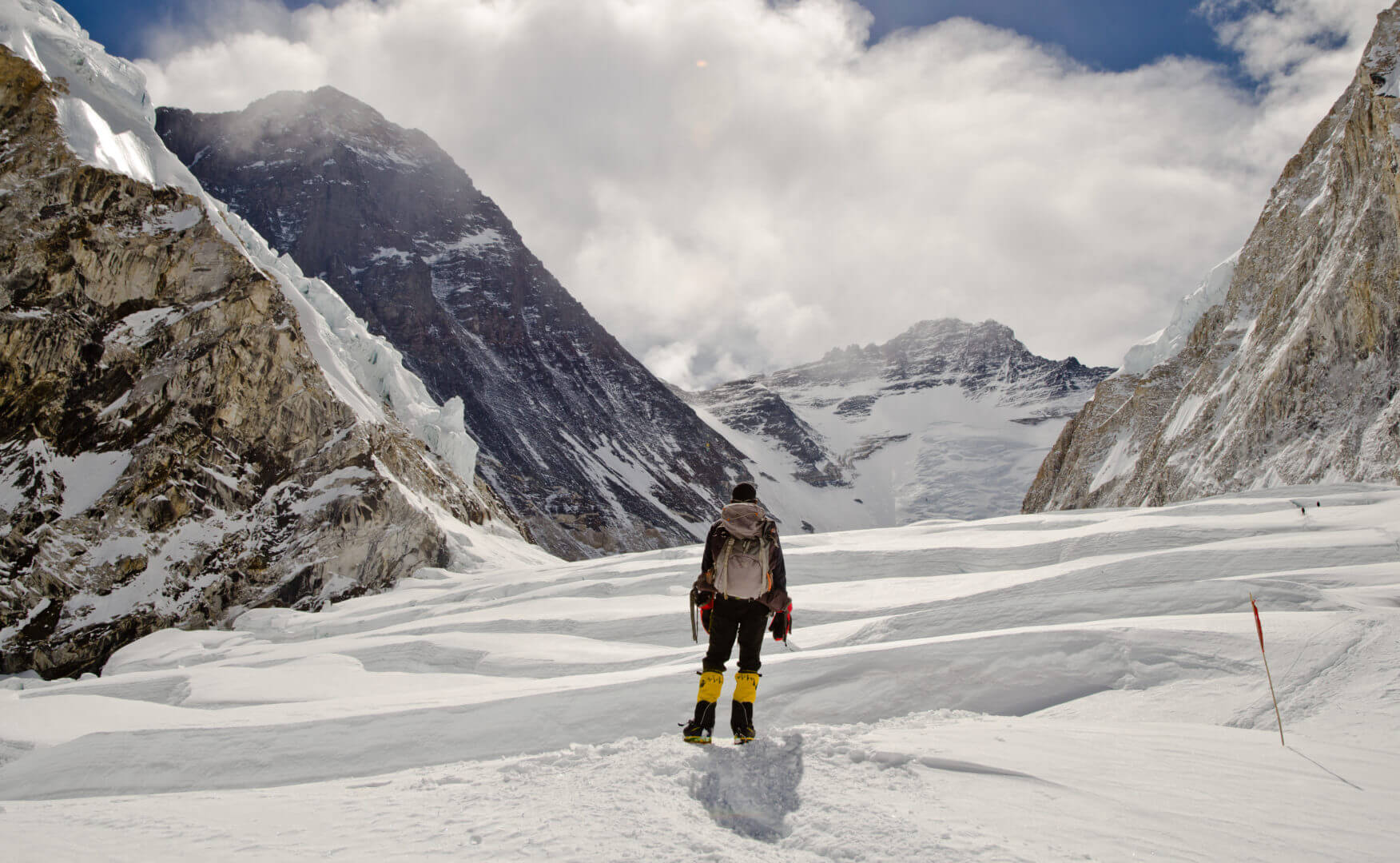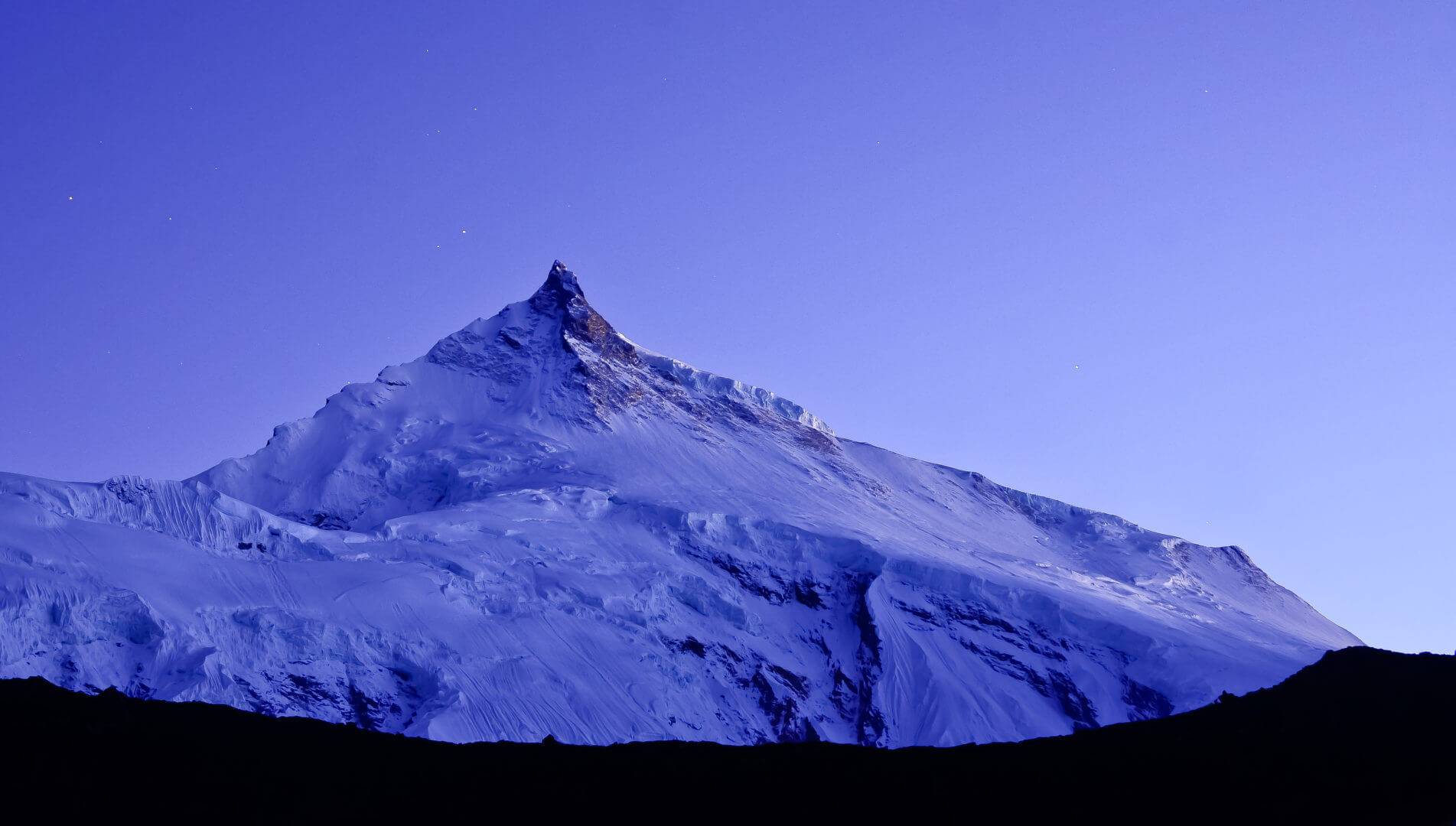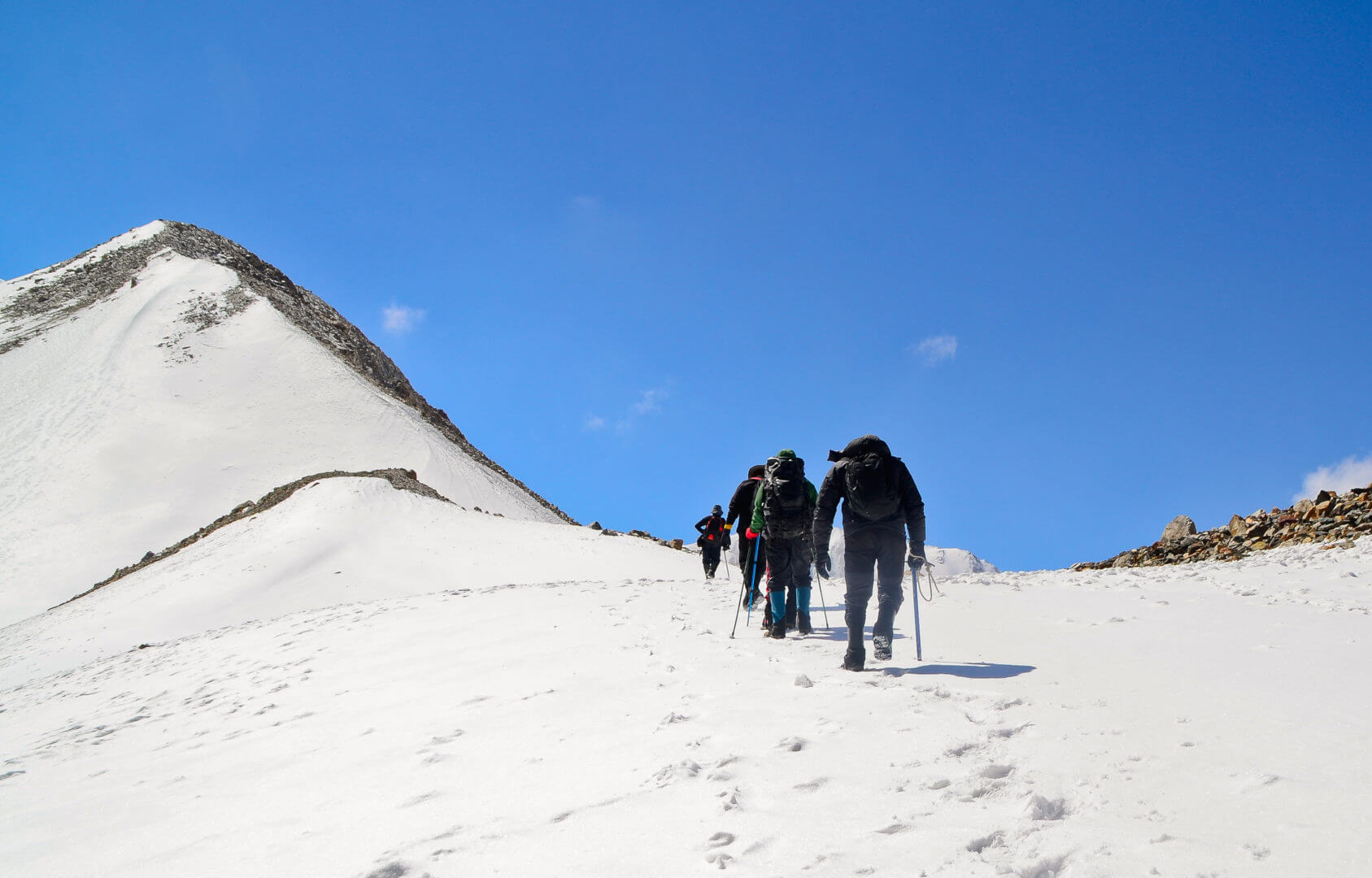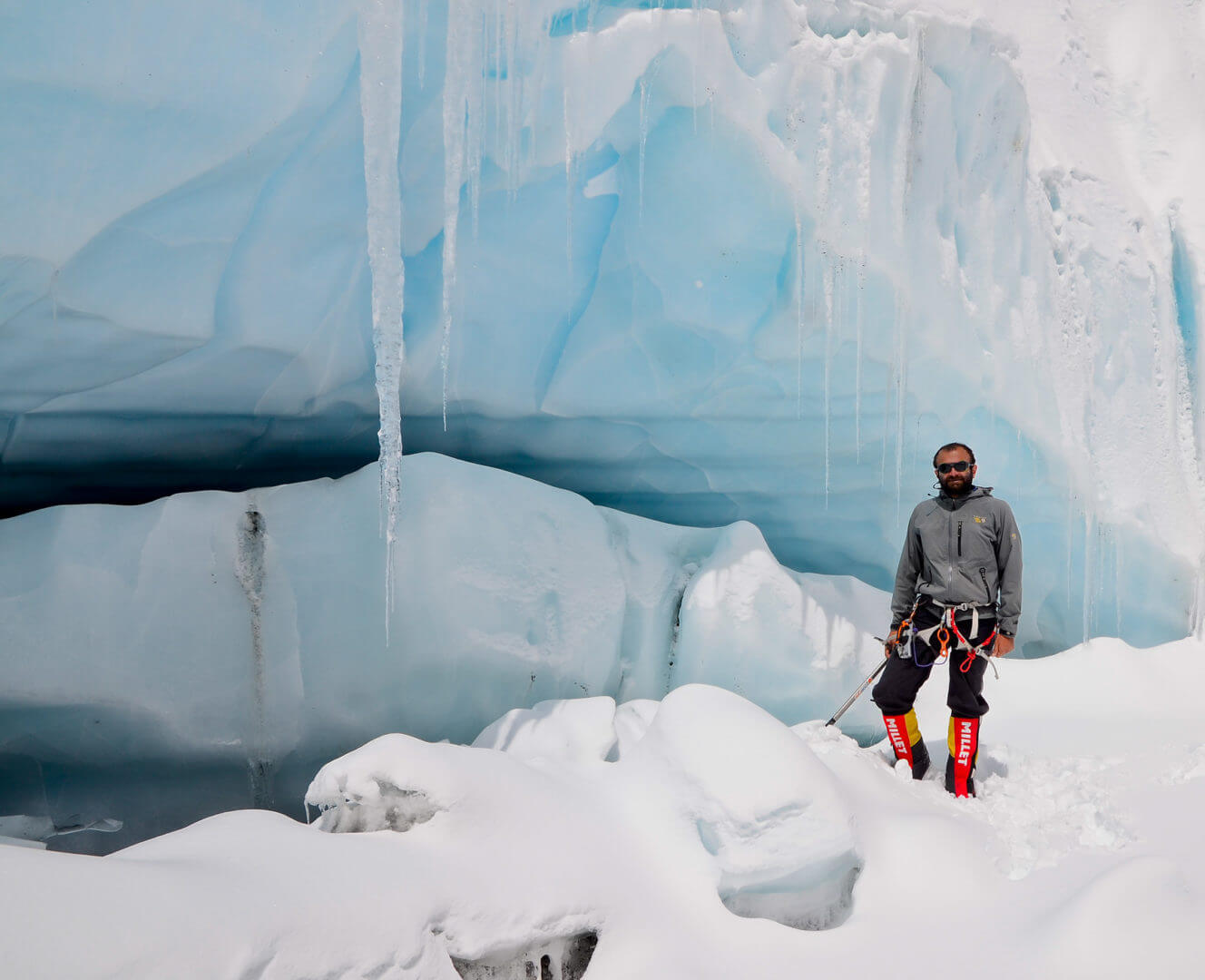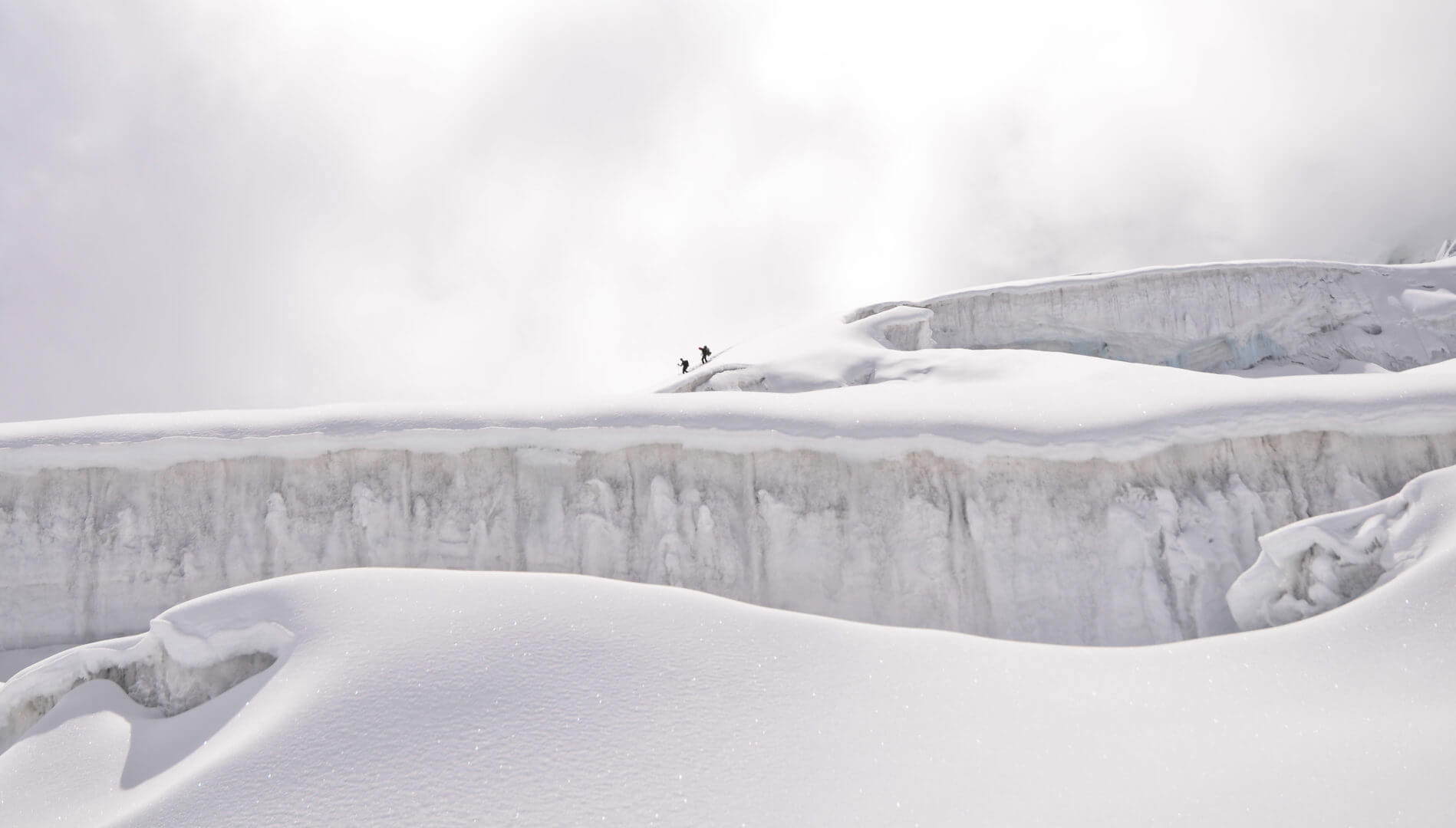Summit of Courage
On April 10, 2015, USC Viterbi alumnus Kuntal Joisher, who holds a 2002 master’s degree in computer science, stood at basecamp staring up at Mount Everest, eager not only to climb the world’s largest mountain but also to conquer a milestone he set after his father was diagnosed with Lewy body dementia (LBD).
“Whenever I’m climbing, I’m not thinking about anything else,” Joisher said. “My family and my dad are the only things that are on my mind. My father is always with me in spirit while I’m on the mountains.”
Mount Everest stands 29,029 feet and has claimed the lives of more than 250 climbers who’ve attempted to reach to the summit and return safely to basecamp. Last year was another deadly climbing season: Fifteen days into Joisher’s trek, the ground started shaking and a cloud of snow billowed from the summit.
“I turned around to find myself face to face with a huge white cloud, possibly the largest thing I had ever seen in my life, approaching the camp at an unreal speed,” Joisher recalled. “We had no time to react or think through next steps. The only thought that was able to cross my mind in that moment: This is the end of my life.”
He and his fellow climbers suddenly had to rely purely on their survival instincts.
“By the time we saw the avalanche cloud — which was almost like a tsunami of snow, ice and debris that was the size of at least 10 football fields — the cloud was less than three seconds away from us,” Joisher said. “There was no time to think or use any skills to make any life-saving decisions.”
They immediately took shelter behind the tent and ducked down with their hands on their heads as the massive cloud belted snow in all directions.
“Buried under the snow cloud’s wake, I felt as if someone had put a plastic bag around my face,” Joisher said. “It felt like it took superhuman effort to suck any air into my lungs.”
He said he would have suffocated without the help of a friend who opened his hard-shelled jacket so Joisher could tuck his head inside, giving him much needed space to breathe.
Once the avalanche passed and the snow settled, the air began to clear. But as the surroundings became more visible, the damage and destruction was more evident. A massive 7.8 earthquake caused the avalanche and devastation in Nepal. More than 9,000 people were killed and 23,000 injured. On Everest, 19 people lost their lives, the deadliest day in the mountain’s history.
“We knew what had happened to us was tragic, but once we heard about the devastation that had occurred across Nepal, we were distraught to learn about the thousands dead and the millions displaced from their homes,” Joisher said. “It began to sink in that this wasn’t a mountain-climbing causality; this was a disaster of unprecedented levels.”
Joisher is now leading expeditions across Nepal to raise awareness about the various landscapes within the country and to encourage travelers to visit after thousands of potential vacationers canceled their trips.
He has been selling his photos of the scenery to help relief efforts at exhibitions, raising money for Nepal Youth Foundation, an organization that brings health, shelter and education to Nepal’s children, and Empower Nepali Girls, a charity that provides scholarships, mentoring, career guidance and subsistence for Nepali girls who lack an opportunity to attend school.
After having a brush with death, Joisher perseveres by maintaining a positive attitude and a simple message: “Life is fragile. More people need to learn to live for today. Don’t let your dreams be dreams, make them a reality.”




